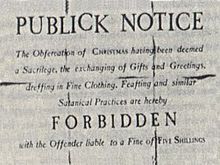 |
| The Nonfiction In Class Essay Rewrite on the summer reading |
As you can see from the image above, one of the major issues with my writing that I was struggling with was expanding upon my analysis and utilizing evidence from the text to its fullest potentials. This failure to go further and deeper into my analysis resulted in an overall lower quality of writing. For some reason, I kept summarizing and repeating what the evidence said instead of thinking about the author's purpose and why they chose to use that specific rhetorical device. Although this early piece of writing is a rhetorical analysis essay, the same issue occurred with my earlier synthesis and argumentative essays as well. Perhaps it was the stressful environment of having only an hour to write a cohesive, well-planned, thoughtful essay, as I was constantly stressed and unable to think about the author's purpose in a deeper meaning. Thankfully, due to Ms. Nagi's constant barrage of essays, I was able to pull myself up by the bootstraps and improve upon this weak area.
AP Multiple Choice/Writing Log
Overall, 11 AP Language and Composition with Ms. Nagi has definitely taught me how to improve myself as a writer and how to formulate and organize my own ideas and thoughts about a wide variety of subjects ranging from the benefits of multilingualism to the essential skill of artifice into a cohesive, strong essay. Although I definitely did not enjoy the mountain of work behind this class, it has clearly expanded upon my world views and opened up my mind to the plethora of information in human society. 11 AP has taught me that one can argue about literally anything. Of course, I enjoyed the many times throughout the year in which we had fun and laughed about silly things such as one student's remarkable submission of an "essay" about polite speech involving the interactions between hypothetical persons A and B. Also, the thought-provoking topics that we have discussed in class have opened up my mind to unique and novel opinions and views that I myself would never have thought of. The many works of literature read over the course of the year have definitely impacted me as well, considering that they were pretty good reads with exceptionally profound messages hidden within them. Food Fridays were also a bonus, although drinking Mountain Dew at 7:30 in the morning is not exactly the best for one's health and well-being. Although 11 AP did not completely remove my disdain for writing essays, it helped build up my confidence and strength in writing so that an in-class essay isn't the end of the world, but rather just another hour of hard work to get through. This old adage sums up this class perfectly:
"When the going gets tough, the tough get going."










